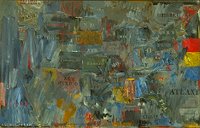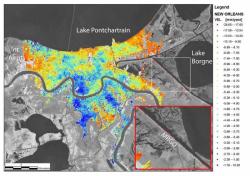Digby has an important post about political values and the red state-blue state divide. While at first sight it appears to have nothing to do with maps, it's actually really about the thing that maps are about themselves: namely the political scene itself.
The immediate context is Josh Marshall's post about the New Yorker piece decrying the fact that Democrats are liberals and keep nominating obviously unwinnable candidates:
I think I've read this article one hundred times -- both in its pre-2006 versions and the new-and-improved 2006 editions. It goes something like this.
President Bush is very unpopular these days and Democrats think they may win back the Congress because of it. But is hating President Bush enough? Or do Democrats need a positive agenda as an alternative to the Republicans? It is thought by some that it might not be enough. Those somes are right to be worried because there aren't as many liberals in the US as conservatives. So trying to frame the election around torture and warrantless wiretaps may not be a good idea. Another reason to be worried is that the white working class, farmers, suburbanites and deeply religious are no longer all reliable Democratic constituencies. But there are some candidates trying to reach out to these ignored constituencies. But will those centrists be forced to cater to the party base and its philosophy of pessimism? It is feared by some that they may be forced to cater.
That's Josh's parody/summary of the New Yorker. Don't nominate a candidate who caters to the progressive base, avoid those values, move to the center, there aren't enough supporters ("liberals") to win.
Both Josh and Digby reject this approach on the following grounds:
1. Digby says that this approach has been tried and it doesn't work: conservatives still hate the southern/centrist/religious Democratic candidates (their names were Jimmy Carter and Bill Clinton). One was impeached and the other is being
attacked with censure, 25 years after leaving office.
2. Here's where the geography/maps come in: the point is that there's no such thing as red state/blue state. Maps sometimes make it look like that, but what is really out there is a bunch of people with varying views and we can draw lines around them in any number of ways. Also not to mention that elections take place at all levels of geography (federal, state, local, urban, suburban, exurban, rural...). So the key is not to see a red state and say it's unwinnable, but to see it as diverse and without stereotyped values. In this regard the argument by
Ruy Teixeira on whether the suburbas "are" really Republican or a mix of values is very exciting and one of the pieces that got me thinking about mapping and politics. If you could map that diversity more closely and less stereotypically, perhaps at
precision mapping levels, you would I think see the diversity. But how to reveal the diversity--that's my interest.
3. Finally, it's still the case that holding to your values is a good thing. Conservative values are on the wrong side of history, especially socially. As for the
mood of the country being conservative:
The "mood of the country" is an extremely complex, ephemeral thing with many permutations, not all of them political. But if the the elite press and its GOP string pullers have decided that the political mood is conservative, the last thing I want to do is accomodate it. I want to change it.
Dem's fighting words!



